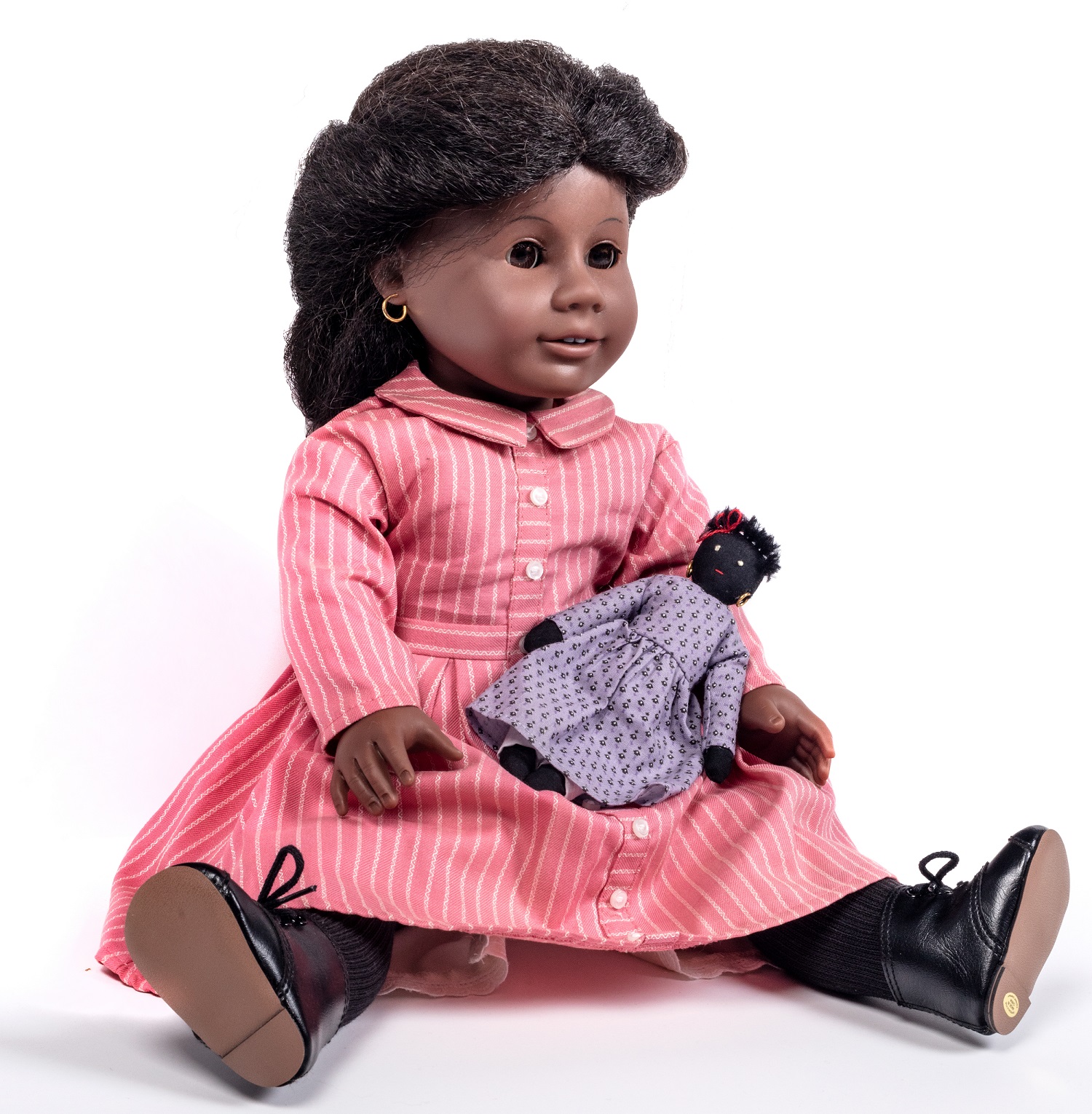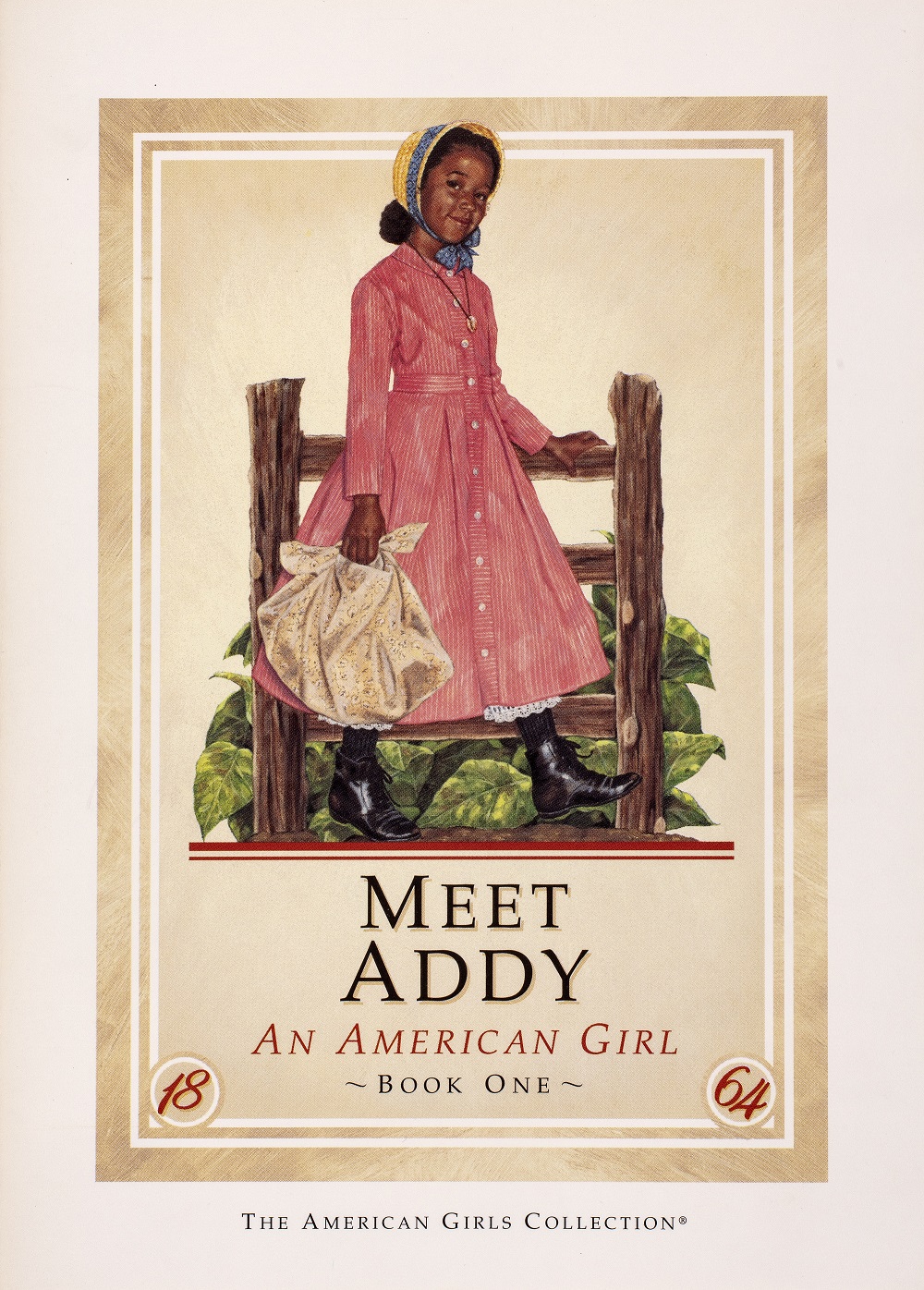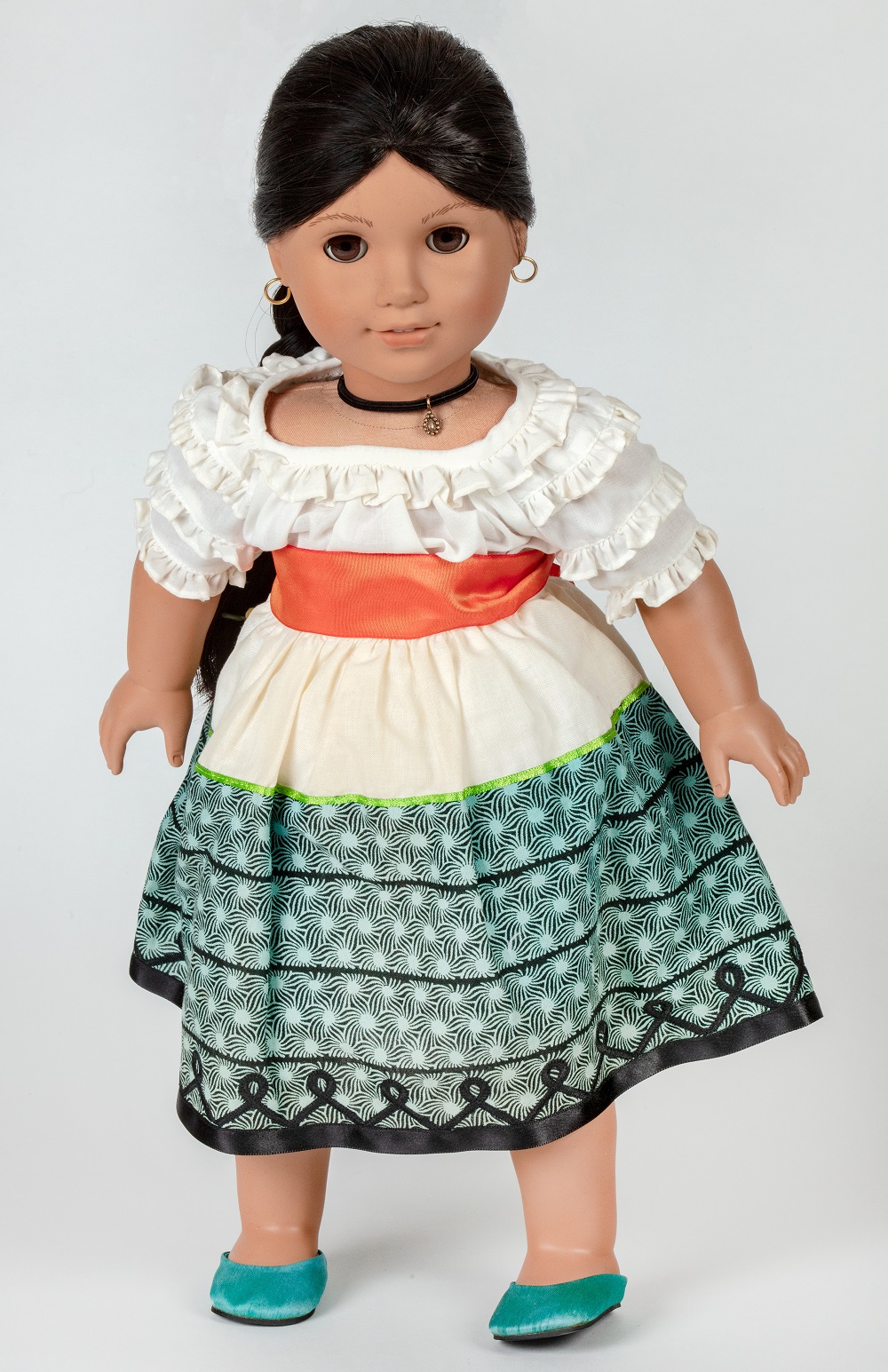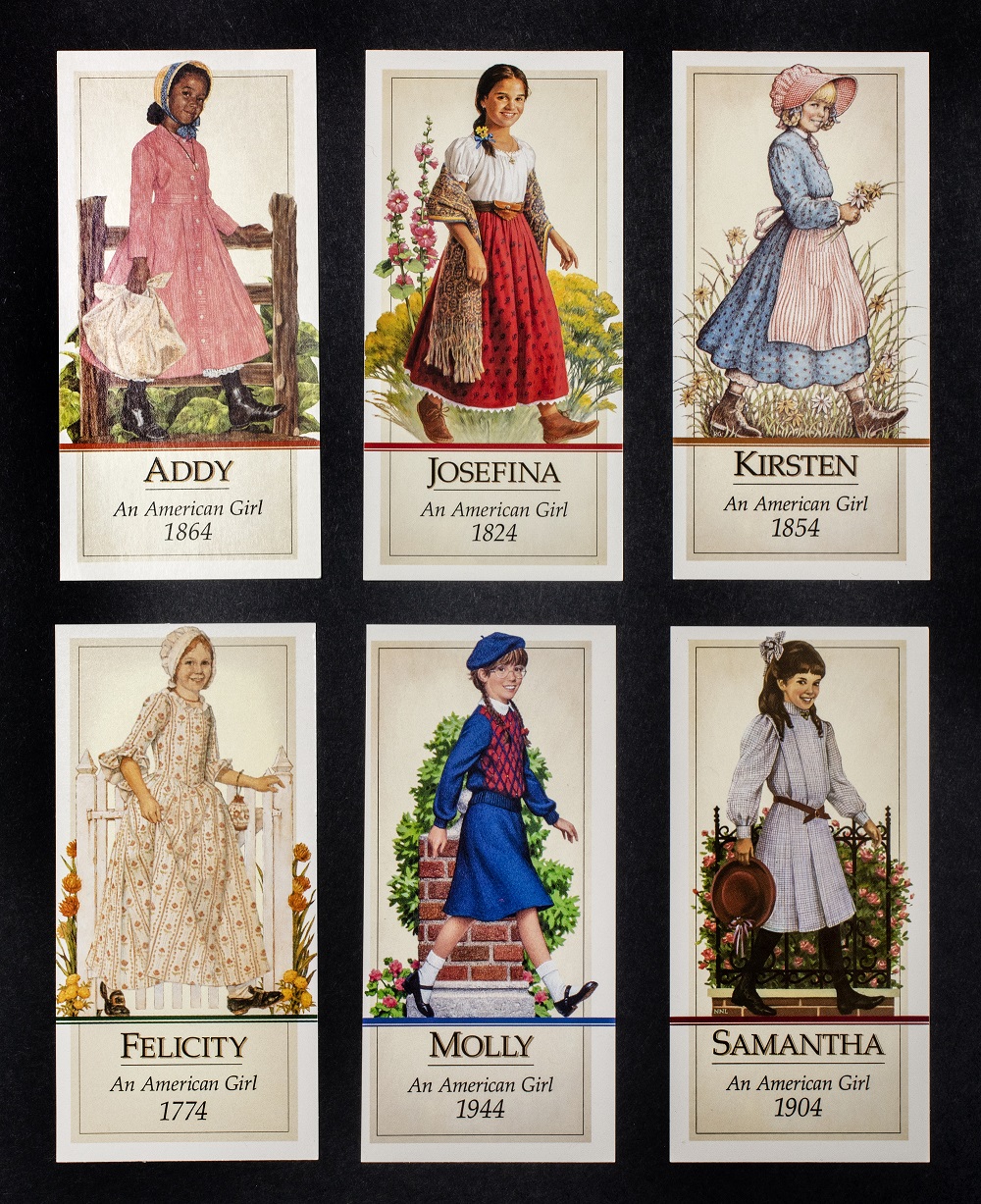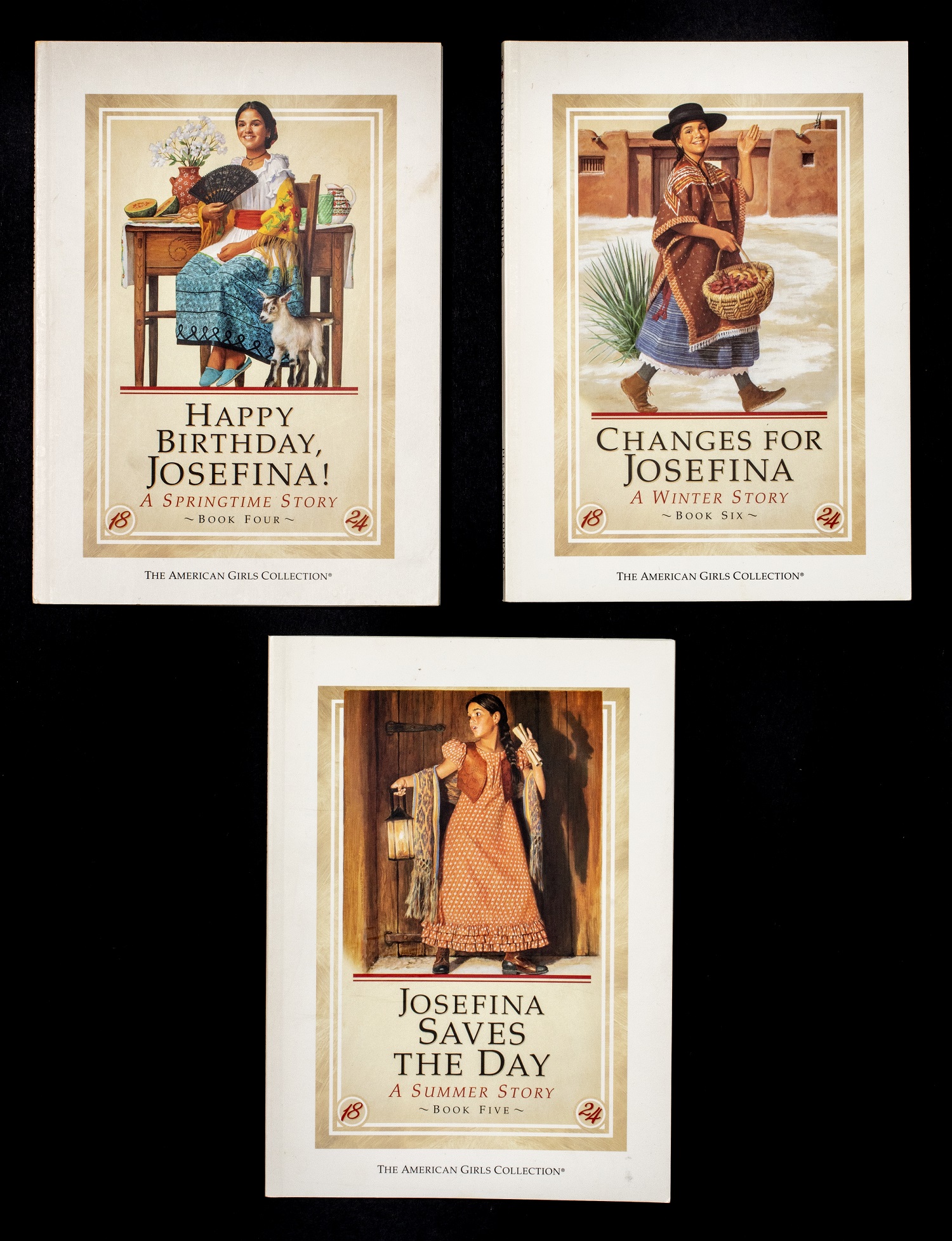Addy Walker doll
American Girl Company, Addy Walker doll, 1993. New-York Historical Society, Gift of Nicole Wagner and Wagner Family, 2020.46.1.
Pleasant Company, Addy: An American Girl book
Pleasant Company, Addy: An American Girl book collection, 1993. New-York Historical Society, Gift of Nicole Wagner and Wagner Family, 2020.46.10a-g.
Josefina Montoya doll
American Girl Company, Josefina Montoya doll, 1997. New-York Historical Society, Gift of Nicole Wagner and Wagner Family, 2020.46.2.
American Girl trading cards
Pleasant Company, American Girl doll trading cards, ca. 1995. New-York Historical Society, Gift of Nicole Wagner and Wagner Family, 2020.46.9a-f.
Background
Pleasant Rowland, a former teacher, founded the Pleasant Company in 1986 in Wisconsin and launched the first American Girl dolls that same year. The dolls were initially available only by mail-order catalog. The company earned over $1 million in its first year of operation.
The original line of American Girl dolls featured historical characters. Each doll was accompanied by a series of books, through which girls could learn about the history of American girlhood, a topic often overlooked in history lessons. The American Girls faced challenges specific to the periods in which their stories were set, but also experienced childhood emotions that felt familiar to late 20th-century readers. The first three dolls, Samantha (1904), Kirsten (1854), and Molly (1944), were white. The company introduced its first doll of color, Addy (1864), in 1993.
The American Girl dolls were also unique in that they depicted children between the ages of 8 and 11. This age representation was a major departure from popular dolls like teenage Barbie. While Barbie’s physical appearance was an unrealistic aspiration for most girls, American Girls were designed to look like the children who played with them.
While the high price of owning a doll (the dolls cost $65 in 1986) put them out of reach for most, many girls connected to the brand by browsing catalogs, checking the books out of the library, and collecting cheaper items such as trading cards.
Mattel purchased the Pleasant Company in 1998. Since then, the American Girl brand has expanded, continuing to release history-inspired dolls and books, as well as other doll lines and products.
About the Document
American Girl introduced Addy Walker in 1993. She was its first doll of color. The character was born into slavery in North Carolina. With her mother she escaped to freedom and moved to Philadelphia. In creating the character, American Girl worked closely with scholars of Black history to accurately represent the horrors of slavery and the perseverance of Black Americans. Her styling reflects this complicated history. Addy has braided hair, a West African cowrie shell necklace, and she has her own Black doll.
Josefina Montoya was introduced as a historical character doll in 1997. She is a nine-year-old Mexican girl from 1824 living in what is now the state of New Mexico. Prior to the Mexican-American War (1846–48) the area was part of Mexico. As with Addy, Josefina was designed with input from experts on the period and area. Her clothing reflects the Mexican dress style of the time, which was more casual compared to white American fashion. The patterns on her skirt are influenced by local Indigenous communities.
The Pleasant Company introduced American Girl trading cards in 1994. They provided a more affordable opportunity to own American Girl merchandise. The original series featured 60 cards for each of the five historical characters available at the time.
Vocabulary
- cowrie shell: A hard shell of a snail that resembles porcelain. Common across the African continent, cowrie shells were historically used as currency.
- mail order: Company where a person can order something through the mail.
Discussion Questions
- What do you notice about the American Girl dolls?
- What made American Girl dolls different from other dolls marketed to girls in the 1980s and 1990s? Why is that important?
- What is significant about Addy and Josefina as non-white American Girl dolls? How do you think the inclusion of dolls of color impacted girls who played with the dolls or read their books? Why do you think the original lineup of American Girl dolls was all white?
- Why were American Girl dolls not accessible to many girls? How did the company still manage to reach girls whose families could not afford to buy the dolls themselves?
Suggested Activities
- Some historians have criticized the inclusion of Addy because they think it is insensitive to have girls play with an enslaved doll character. Have students research the story of the Addy doll and the debate surrounding this character.
- Have students create a mood board based on their analysis of the dolls.
- American Girl dolls became a popular internet meme in 2022. Encourage students to consider whose stories are often overlooked in history by having them create their own “we need an American Girl doll who…” meme.
- Compare the American Girl dolls with Barbie and Christie dolls from the 1950s and 1960s.
- Learn more about the critical role of Black dolls in the lives of Black girls by comparing Addy Walker to Black dolls from the 19th century.
Themes
AMERICAN CULTURE; AMERICAN IDENTITY AND CITIZENSHIP


